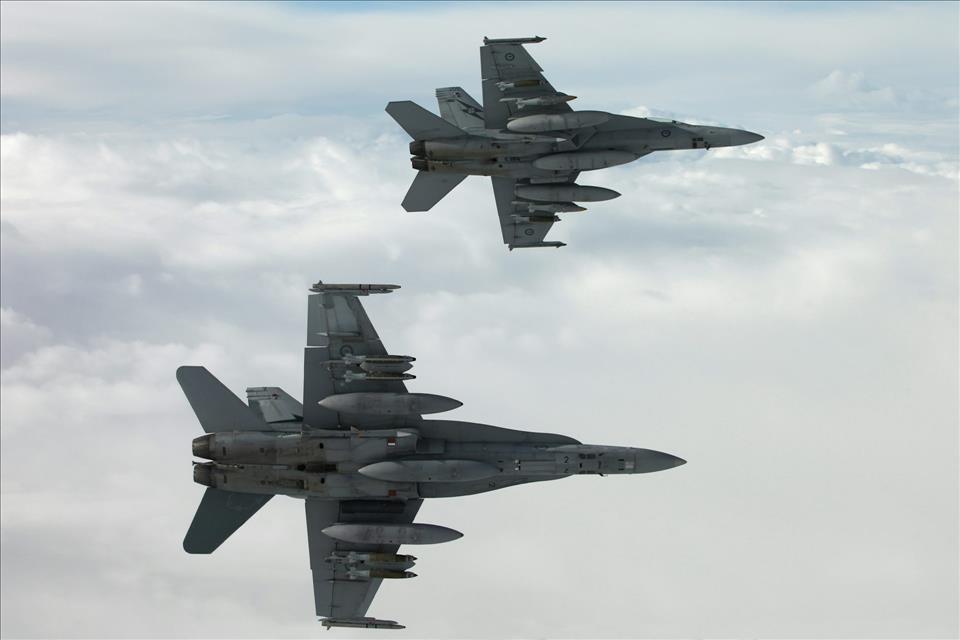
NATO's 5% Of GDP Defence Target Ramps Up Pressure On Australia To Spend Vastly More
A NATO statement released this week said:
This development comes at a tricky time for the Albanese government. It has so far batted away suggestions Australia should increase its defence spending from current levels of around 2% of gross domestic product (GDP), or almost A$59 billion per year (and projected to reach 2.33% of GDP by 2033–34). Trump has called on Australia to increase this to about 3.5%.
With this NATO agreement, global security deteriorating and defence capability gaps obvious, pressure is mounting on the Australian government to increase defence spending further.
Pressure from TrumpA long‐time critic of NATO, Trump and his key officials have castigated NATO's readiness and spending.
Meanwhile, Russia's war on Ukraine, now in its fourth year, and a spate of suspected Russian sabotage across Europe have sharpened concerns about allied preparedness.
Against this backdrop, the NATO summit saw Trump publicly reaffirms US commitment to the alliance, and European members pledged to lift defence spending.
What exactly did NATO promise and why?The headlines say NATO members agreed to increase annual defence spending to 5% of GDP by 2035.
In fact, the actual agreement is more nuanced.
The summit communique , notably shorter than in previous years, broke the pledge down into two parts.
The first is 3.5% of GDP on what is considered traditional defence spending: ships, tanks, bullets, people and so on.
The second part – the remaining 1.5% of GDP – is to
Exactly what strategic resilience initiatives this money will be spent on is up to the individual member nation.
It might be tempting to paint NATO's commitment to increased defence spending as evidence of European NATO partners bowing to US political pressure.
But it's more than that. It is a direct response to the increased threat posed by Russia to Europe, and perhaps an insurance policy against any doubts European NATO partners may have about the US reliability and enduring commitment to the 76-year-old alliance between the US and Europe.
However, not all countries are keen on the defence spending commitment, with notable reservations from Spain and Belgium .
These two countries are yet to meet NATO's 2014 commitment to spend 2% of GDP on defence.
What's all this mean for Australia?The commitment to hike NATO defence spending will have an indirect impact on Australia's own beleaguered defence spending debate.
As mentioned, Australia's main strategic ally – the US – has pressured Australia to hike defence spending to 3.5% of GDP, up from around 2.02% of GDP this financial year (which the government projects will reach 2.33% by 2033–34).
Australia is not the only Indo-Pacific partner being pushed to spend more on defence. Japan is too.
This is consistent with US Defence Secretary Pete Hegseth's Shangri-La speech in May, when he urged Asian allies to step up on defence spending , pointing to Europe as the model.
The NATO announcement will likely embolden the US to apply greater pressure on the Australia to increase defence spending.
Trump's strategy towards NATO has clearly been to sow ambiguity in the minds of European countries as to the US' commitment to NATO, to get them to come to the table on defence spending.
This may well be a future Australia faces, too. It could mean a bumpy road ahead for Australia and its most crucial alliance partner.
Where to from here?Prime Minister Anthony Albanese has said Australia will determine its own level of defence spending, and that arbitrary GDP limits are unhelpful. Defence spending, he argues , should be based on capability needs, not demands from allies.
And he is right, to a point.
That said, allies have a right to have an expectation all parties in the alliance are holding up their end of the bargain.
Australian defence spending should be based on the capabilities it needs to resource its stated defence strategy and defend its core interests. Currently, in my view, Australia's defence capability does not match its current strategy.
There are clear gaps in Australia's defence capabilities, including:
-
its aged naval capability
a lack of mine warfare, replenishment and survey capabilities
a limited ability to protect critical infrastructure against missile attack
space capabilities.
These are key risks, at the moment of possibly most significant strategic circumstances since the second world war.
In the event of a major crisis or conflict in the region, Australia would not presently be able to defend itself for a prolonged period. To address this requires structural reform and defence investment.
In response to this week's NATO announcement, Defence Minister Richard Marles said :
During the election campaign both the prime minister and defence minister left the door open to increasing defence spending.
The real unknown is how long it will take to make it happen, and how much damage it may do in the meantime to Australia's relationship with the US and overall defence-preparedness.

Legal Disclaimer:
MENAFN provides the
information “as is” without warranty of any kind. We do not accept
any responsibility or liability for the accuracy, content, images,
videos, licenses, completeness, legality, or reliability of the information
contained in this article. If you have any complaints or copyright
issues related to this article, kindly contact the provider above.
Most popular stories
Market Research

- Moonbirds And Azuki IP Coming To Verse8 As AI-Native Game Platform Integrates With Story
- B2BROKER Taps Finery Markets To Power Institutional Crypto OTC On B2TRADER
- Forex Expo Dubai 2025 Returns October 67 With Exclusive Prize Draw Including Jetour X70 FL
- “Farewell To Westphalia” Explores Blockchain As A Model For Post-Nation-State Governance
- Schoenherr Opens London Liaison Office As Gateway To Central Eastern Europe
- Falcon Finance Sets Community Sale Record On Buidlpad With $113M $FF Token Commitment




















Comments
No comment